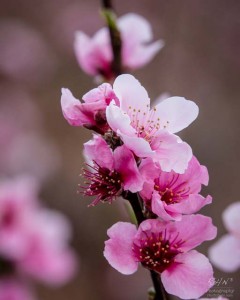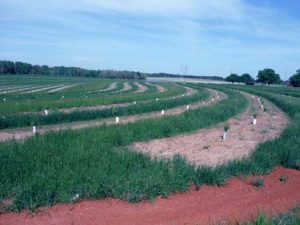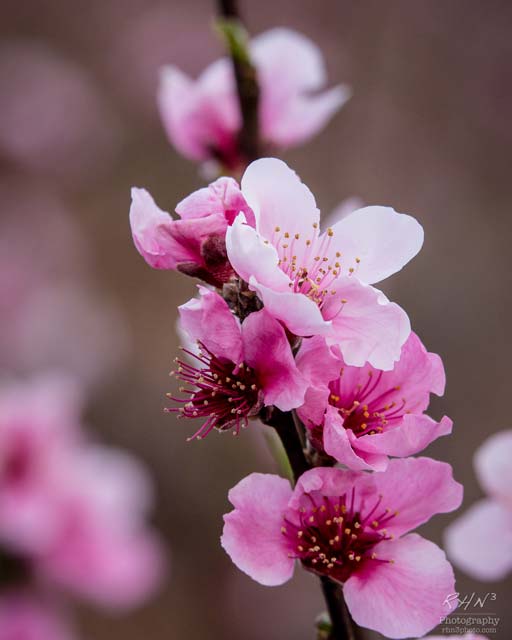 Should See “Good Volume” From July On
Should See “Good Volume” From July On
– By Tiffani Ireland –
March 26, 2014, will be a day peach growers in Edgefield County and the Ridge area will not soon likely forget. That is because on that day, temperatures dipped, in some areas of the county, as low as 21°F and remained below freezing for 7-12 hours. As a result of all that cold, some of the early variety peaches saw a 100% kill. “I’ve never seen one night do that much damage,” Chalmers Carr of Titan Farms told The Advertiser in an interview, Monday, Apr. 21. As a result of these losses, Clemson Extension Agricultural Agent Greg Henderson told The Advertiser, “We [local peach industry] are hurt pretty bad on the front end,” but went on to add that by the beginning of July the local peach industry should be seeing “good volume.”
To understand the damage sustained by the local peach growers, Mr. Henderson explained that peach trees do not care for cold weather. Their critical temperature is 28°F. A drop in temperature below 28° when a tree is in bloom means the peach starts to receive injury. Prolonged exposure to those temperatures or even colder temperatures results in the fruit being killed. As Mr. Henderson put it, “Dead is dead,” and, as previously stated, some May varieties are 100% dead. Mr. Henderson said in his 16 years of working with agriculture in the area that this is the first time he has seen the peach crop lost in bloom. As a result of the loss of these early peaches, the “front end season” for the local peach industry is considered a loss commercially.
In the Edgefield County area, roughly 40 different varieties of peaches are grown throughout the months of May to September. As Mr. Henderson explained, this span allows growers to stretch out their harvest and lowers the overhead for commercial growers. It may very well be this span of harvest time that is what sustains the peach industry this year, as it allows growers the opportunity to at least make some money on the later yields. However, as one grower shared, it is not likely that these late sales will cover the losses of the early crop since these earlier peaches are the industry’s biggest money makers. Even though unable to supply the commercial market, baskets of some of the early peaches will still be available on local stands as growers will be able to meet local supply needs.

As previously noted, commercially, many local growers are going to be significantly impacted. Jimmy Forrest with Dixie Belle Peaches, whose business is about 90% commercial, said his orchard lost 50-70% of its crop this season. “It was too cold for too long,” Mr. Forrest said in speaking with The advertiser. And while he predicted prices will certainly be higher on the commercial market in May and June, he said this will not help our local growers because they have no peaches to supply to the commercial market. However, for his business, Mr. Forrest said in July and August consumers can expect a “nice crop; good quality.”
Mr. Carr with Titan Farms concurred with Mr. Forrest’s statements on the commercial impact but added that the biggest impact will be on the local community. Titan, whose business Mr. Carr estimated to be over 90% commercial and who lost an estimated 45% of their entire crop, normally employees 540 workers for peach season. However, Titan is currently employing only 130 peach workers. Additionally, their packing shed, which normally is running by now, will not start up until mid to late June, and then will only be packing 25% of normal volume. As he pointed out, for his business alone, that means roughly 500 workers are without employment and unable to contribute to the local economy. As for how his peach business might fair later in the peach season, Mr. Carr said he expects Titan will be doing 80% of normal business.
Commercial growers are not the only local peach farmers being impacted by the weather. Larry Cook with Cook’s Farm is a local retailer of peaches in our area supplying peaches to their road-side stand. In speaking with The Advertiser, he said in regards to the commercial growers, “We’re in the same situation.” He went on to say Cooks will have peaches, but they just do not know how much volume their crops will yield this season. On a whole, Mr. Cook said regarding volume it is “wait and see” for them, but he did say some of their earlier varieties are totally lost. As for what these losses mean to prices at the stand, Mr. Cook did say he expects to be able to maintain prices from previous peach seasons.
As the weather seems to be improving in our area, local peach growers are still not out of the woods yet, as hail is considered by many growers to be the next biggest worry to this year’s crop. And, as always, rain will be a factor, too. While they obviously need rain, too much rain could negatively impact the remaining peaches. Also, any more cold temperatures could prove detrimental to the remaining crop, as now the peaches are “naked” on the trees. Being exposed on the tree opens up the possibility of not only cosmetic damage but death to the fruit as well.
While the news is not great on the commercial side of the peach industry, Mr. Henderson reminded there will still be “plenty of local delicious fruit [peaches]” available. He said some of the peaches “may not be as pretty as we think” but reminded that at least we will still be able to purchase them at the local stands. As for the local peach industry and the remaining crops in the field, Mr. Henderson said, “ We just need for spring to come.”


Pingback: Wild Winter Weather Hurts Early Peaches | FlipsPops